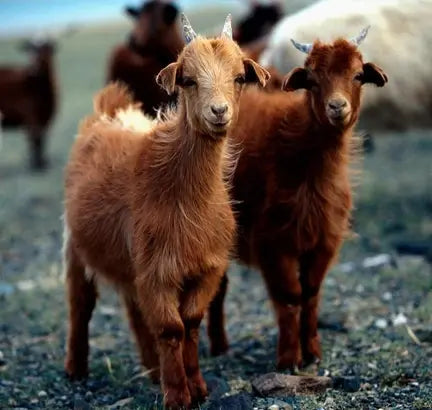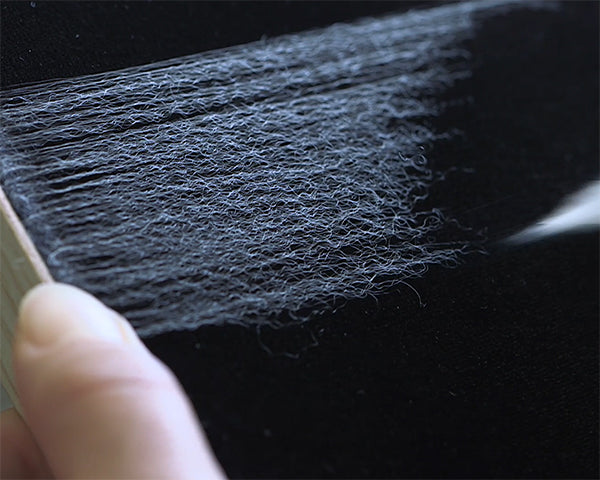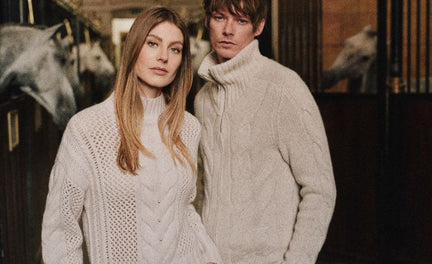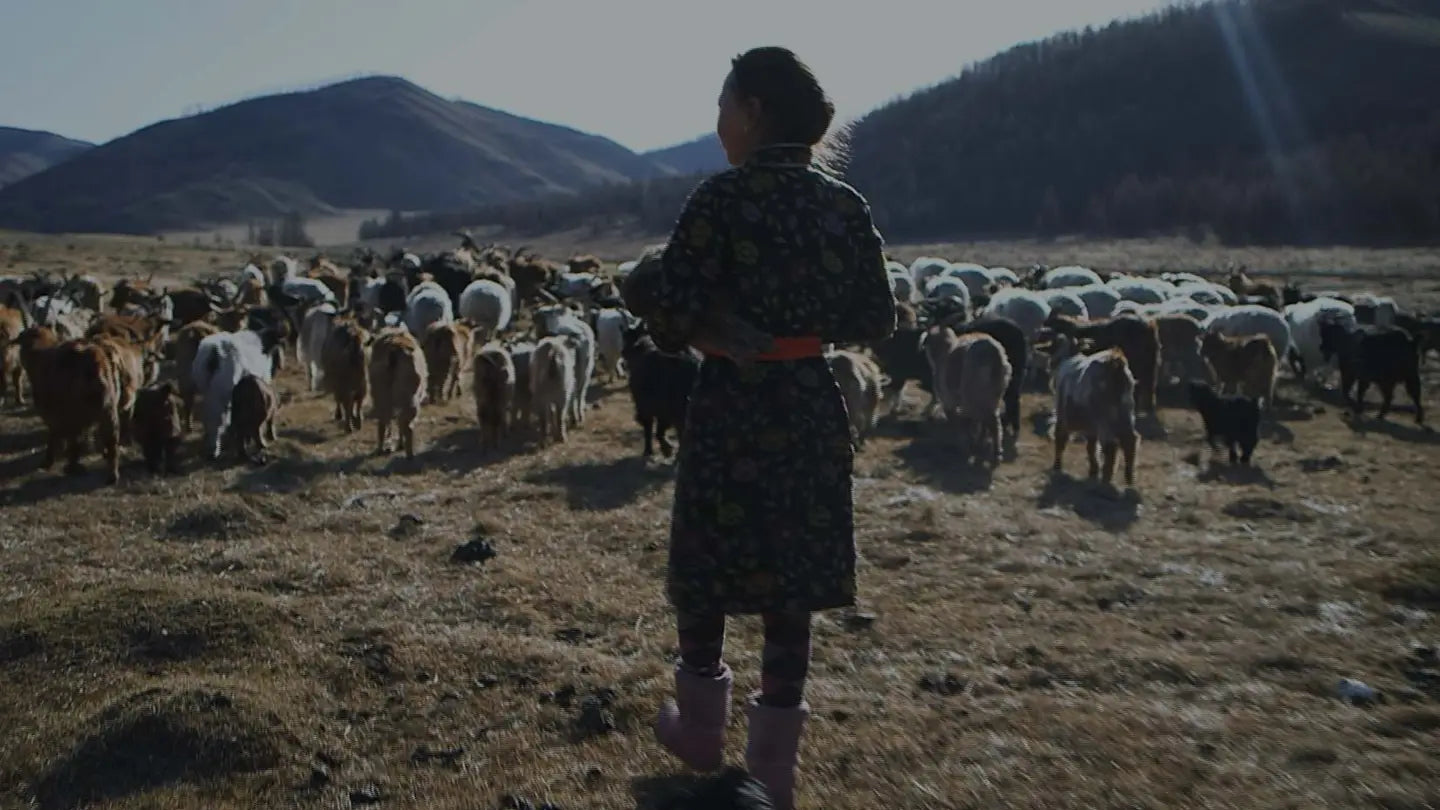Cashmere origins: Where does it come from?
Cashmere is far more than just a fabric. It has its origins deeply rooted in the natural world, with a meticulous process that transforms the wool into the soft, luxurious garments that we adore.
Where does cashmere come from?
Cashmere comes from the soft undercoat of specific breeds of goats. These goats are found in regions with cold climates, including Mongolia, Tibet, parts of China, and other Central Asian countries.
The extreme weather conditions have led to the development of a luxurious, soft and insulating coat on these goats. It is the fine undercoat that is carefully harvested to create beautiful cashmere clothing and textiles.
Our cashmere comes from Inner Mongolia, which we believe produces the highest quality cashmere wool in the world. The herders in this region have learned the best ways to care for their animals over many generations and against years of harsh Mongolian winters.
What animal does cashmere come from?
Cashmere comes from the cashmere goat, also known as Capra Hircus goats. During the winter months, these goats grow a luxurious undercoat to protect themselves from the cold. This undercoat consists of fine, downy fibres. It is this precious material that is harvested and used to create cashmere products.

The herders have learned the best ways to care for their animals over many generations. Due to the fact their area of Mongolia experiences extremely harsh winters, the goats grow a longer and finer winter coat. We can trace our cashmere wool right back to the individual herders in Mongolia and only use the finest fibres.
If you’re buying “cashmere” that is made of synthetic material, sheep wool or other materials that haven’t been sourced from cashmere goats, it isn’t pure cashmere and won’t have the same benefits as true cashmere does. Here’s how to recognise quality cashmere.
How is cashmere made?
The journey from goat to garment is an intricate process that we know inside out. From scouring to spinning, knitting and finishing, we’re in control of our cashmere manufacturing process throughout.

This is how we work with our suppliers and experts to create our cashmere clothing:
- Cashmere harvest: In spring the cashmere goats shed their winter undercoat as the weather gets warmer. The herders then gently comb or shear the goats to collect the soft, downy fibres. It requires careful attention to detail and skill to keep the fibres intact and undamaged, and causes no harm to the goats.
- Sorting and cleaning: Once collected, the raw cashmere fibres undergo a meticulous sorting process. They are separated based on factors like colour, length and quality, and then thoroughly cleaned. We only use the longest, purest and softest fibres.
- Spinning: The cleaned cashmere fibres are then spun into yarn. This step involves twisting the fibres together to create thread-like strands. The thickness and texture of the yarn can be adjusted depending on what’s being created.
- Weaving and knitting: The spun cashmere yarn is transformed into fabric by weaving and knitting the material to turn it into beautiful garments.
- Dyeing and finishing: If needed, the cashmere fabric is dyed to achieve various colours and patterns. It is then meticulously finished to enhance its softness, texture and overall appearance.
Cashmere's journey from the backs of cashmere goats to our closets is a testament to the intricate craftsmanship and the extraordinary properties of this natural fibre. The remarkable softness, warmth, and versatility of cashmere make it a beautiful material for those who appreciate the finer things in life.

Each cashmere product tells a story of nature's resilience and human artistry, resulting in garments and accessories that are luxurious and last. If you care for your cashmere - washing and drying it correctly, removing any stains and keeping it in shape - then it can stay looking beautiful for years to come.



